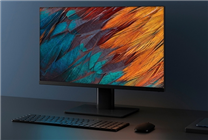The GPU Market Landscape: AMD’s Position Amidst Dominance by NVIDIA
- NVIDIA captures a staggering 94% of the AIB independent graphics market.
- AMD’s market share plummets to 6%, a significant drop from previous periods.
- A shift in AMD’s strategy may influence future performance and market dynamics.
The latest report from the research agency JPR reveals striking developments in the GPU market for the second quarter of the year. NVIDIA has solidified its position with an impressive 94% share of the AIB (Add-In Board) independent graphics card market, marking an all-time high for the company. This monumental success highlights NVIDIA’s robustness and strategic prowess in a competitive landscape.
In stark contrast, AMD’s share of the independent graphics card segment has diminished to a mere 6%. This figure represents a significant decline from the 12% market share they recorded during the same period last year and reflects a 2% drop from the previous quarter. Such a downturn has sparked much discussion among tech enthusiasts and industry observers, drawing attention away even from Intel’s share within the market.
At the recent IFA 2025 exhibition, questions arose regarding AMD’s perspective on this disheartening report. While many anticipated a robust response, AMD decided to maintain a measured tone, opting not to directly address the stark statistics presented by JPR. An AMD representative stated that the company is content with the ongoing strong sales of AMD GPUs across various sectors, emphasizing that demand continues to surpass supply.
Following the launch of the RX 9000 series, AMD announced plans to ramp up production significantly. However, the company has yet to disclose specific sales figures for this new lineup, leaving stakeholders curious about its impact on overall market share. In light of this, it’s pertinent to consider AMD’s strategic pivot with the inception of the RDNA4 architecture generation.
AMD has notably shifted its market strategy by stepping away from the flagship graphics card segment. The RDNA4 generation consists of only four models: the RX 9070 XT, RX 9070, RX 9060 XT, and RX 9060. Compounding this shift is the fact that some of these models may not even be available in the DIY market, further limiting AMD’s reach within consumer segments.
The ramifications of AMD’s strategic decisions are significant in a landscape dominated by NVIDIA. Industry analysts are closely monitoring how AMD’s focus on the mid-tier market with its recent releases will redefine its future positioning in a domain where NVIDIA continues to excel. With the RX 9000 series poised to capture attention, AMD’s ongoing challenge will be reinforcing its presence and reclaiming market relevance in an environment where competitors are not only advancing but also diversifying their product offerings.
In conclusion, the GPU market is evolving rapidly, with NVIDIA currently at the helm. AMD’s response to these market dynamics will be crucial as it navigates challenges and opportunities within the industry. Future product releases and adjustments in strategy may be key to revitalizing its market share and consumer interest.
Summary
- NVIDIA’s Dominance: NVIDIA commands a significant share (94%) of the AIB graphics market.
- AMD’s Decline: AMD’s market share has dropped to 6%, raising concerns and discussions among industry experts.
- Strategic Shifts: AMD is refocusing its strategy with the RDNA4 architecture, targeting mid-tier segments while stepping away from high-end models.







